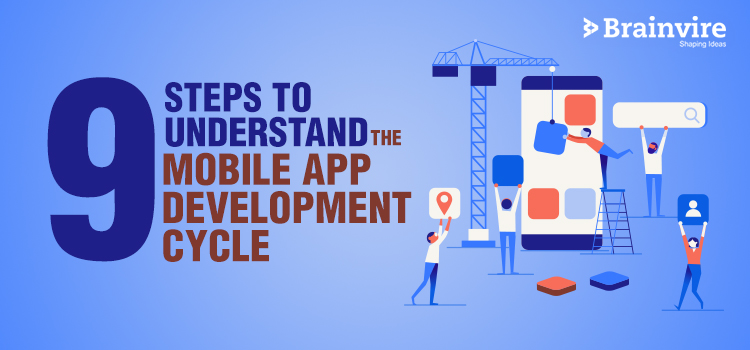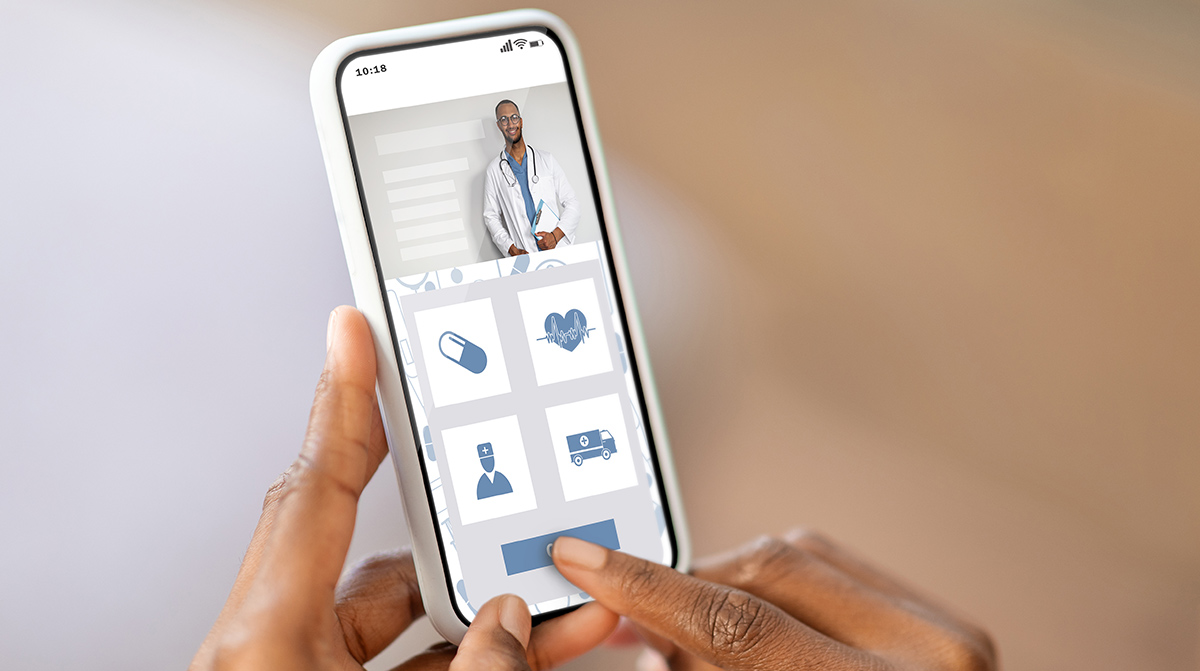
A consistent inclination that’s applicable for all app development projects is that you need to learn to code. If you can’t code, the whole idea of developing mobile apps will look like a black box to you.
If you want to build a mobile application for your business, it is important to have thorough knowledge about all the intricacies involved in the development process. If you need to know more about the importance of mobile apps, then take a look at these statistics, and you will be convinced.
- When a user is consuming digital media, more than half of his or her time is spent navigating through a mobile app.
- A smartphone user spends over 90 percent of his or her time using a mobile app.
- About 85 percent of customers prefer a mobile app over a regular mobile website.
- For all Fortune 500 companies, mobile apps account for over 42 percent of all mobile sales.
- The average smartphone user has some 30 apps installed on his or her phone and spends about 35 hours navigating through them.
- Mobile apps may generate $189 billion in revenue by 2020.
Take a look at the stats mentioned in this table:
| Year | Annual mobile app downloads |
| 2017 | 178.1 billions |
| 2018 | 205.4 billions |
| 2022 | 258.8 billions |
There are hundreds of reasons why you should have a mobile app for your company. If you are having an eCommerce website created through the Magento development company then you should consider having a mobile app. However, the decision to develop an app should not be taken lightly. Google Play and the App Store have over 3 million apps in total. To have an app that stands out, you need to be well aware of the mobile app development process. Along with this, you will also need to understand how well your app will do, with regards to your niche market and your marketing goals.
Having said that, in this blog post, we will take a closer look at the entire mobile app development cycle. The following topics are covered in this blog:
- Begin with in-depth research
- Determine the goals and objectives of your mobile app
- Create a wireframe and storyboard
- Define the backend features of your mobile application
- Time to test your prototype
- Layout a plan for the development of the mobile app
- Test your mobile app to perfection
- Prepare for the launch
- Time for the official release
- Final words
Let’s get started!
1. Begin with in-depth research
Having a few good mobile app development ideas at hand is a great way to start building your app. But before you dive into the app design and development phase, the first thing you should begin with is to analyze and research the market. Divulge in extensive research to understand your business goals, target audience, and your competitors. While you are at it, make sure you answer all these questions.
- What do you want your mobile app to accomplish?
- Who is your target audience?
- How should your customers use the mobile app?
- What type of platform would you like to use?
- What type of framework would you like to use?
- What development language do you want to use for your mobile app?
- What tactics are your competitors following?
- What’s your app budget?
- How do you plan to promote your mobile app?
- When do you intend to launch your app?
If you have answers to all these questions ready, it is time to put your entire app development team in place and gather all the relevant departments. While you are at it, don’t forget to discuss out all the information you have gathered by research with other teams. To experience a smoother development process, receiving informed feedback in the early stages is important.
2. Determine the goals and objectives of your mobile app
In the planning phase itself, you need to determine all the advance objectives that will get built-in in your app. Here’s a rough outline for the same:
- What problems your app will solve
- The features of your app
- The core appeal of your app
In several cases, the features and functions of your app are a balancing act between your budget and the capabilities of any eCommerce development or mobile app development company you’d hire. When it comes to prioritizing functionality, make sure the app design offers customer engagement over special app services.
3. Create a wireframe and storyboard
By now, you should have a clear idea about what kind of features you want in your app and what it should look like. So by now, you should also have the scope of work prepared. You should know what part of the app function is to be outsourced and what part is to be developed in house. After this, it’s time to create a storyboard.
You can hire one of the best Android app development services to wireframe your app. The ultimate goal here is to present a clear picture of how your idea and proposed features will blend to make a functional app. For this, you will also need a storyboard or roadmap, which will help you understand how users will navigate from one screen of your app to another. While creating your sketch, keep these things in mind:
- Incorporate your brand identity
- Develop an excellent user experience
- Analyze the difference between how people use a mobile website and a mobile application
4. Define the backend features of your mobile application
Your storyboard and wireframe will also help you define the backend structure of your mobile app. In order to support your app, you will require APIs, data diagrams, data integration, servers, and push notifications. A mobile backend as a service (BaaS) platform can help you do just that. There are cases where experts find a mobile backend as a service (BaaS) platform a good idea. This is because they can easily solve common challenges that arise in the house like scalability and insufficient.
It is very important to stay flexible here. There may be a chance that your wireframe and storyboard may lead to certain technical limitations, especially during backend development. Don’t get bogged down by it. It’s very common and can be overcome.
5. Time to test your prototype
Now is the time to nail down any changes found in the wireframe during the backend development procedure. Once everything is in place (the wireframe and storyboard), you can start building an interactive prototype.
Building a prototype is a crucial step in app development because it allows you to evaluate your design concept, collect feedback, and identify all the flaws (including dead links) in the flow and usability of your app. The internet has a variety of prototype tools you can use to simplify the process. If it gets too much at any stage, don’t forget, you can also hire an agency to help you do the needful.
What you can do is rope in people who are not a part of your development team and take their ideas and opinions. Analyze how they respond and interact with your application. After that, ask for their honest feedback on the app’s user interface. If you find any shortcomings about UI/UX arise, resolve them right away.
The end goal here is to finalize the design and create a prototype that will take you through the actual development process.
6. Lay out a plan for the development of the mobile app
Developing the app requires a number of steps. If you are not using any app development platform, your developers will have to set up the actual storage solutions, APIs, servers, and databases at the backend of your app. Set up a developer’s account in the app stores, if you don’t already have it. This will help you distribute your app and since this process might take days to reflect, it can easily be overlooked. Also, don’t forget to read through the App Store guidelines.
Now the experts from the app development company will create the actual app screens that will be used in your mobile app. These renderings will represent the interface that users will use to interact with your app. Make sure you add all the ideas, information and feedback gathered during testing time because, in the end, you need people to enjoy navigating through your app.
7. Test your app to perfection
The most exciting period in the app development cycle is testing. After all, your app is finally ready with its exciting graphics and text. This is the time to rigorously test your app in real-world scenarios. This is your chance to correct any technical flaws that may arise.
Here, you have to compare your original design and go through each and every existing feature. Most importantly, don’t assume everything will work out well in the final layout just because it worked well during the development phase. Again, having someone else test your app will be a great idea because he/she might have questions and insights that might have slipped your mind. Since you have been involved in the development of the app from day one, such obvious doubts might not cross your mind.
Take it up a notch higher and use a good online mobile UX testing tools to get real-time feedback and analysis on your app. Make sure that you test your app cross-platform and specifically check the compatibility of images, graphics, and user experience. Once you are confident your app is working on all possible scenarios, then it is time to get ready for the launch.
8. Prepare for the launch
The success of your app is heavily dependent on the way you launch it. One of the most important things you need to do is get your marketing department onboard from the app’s development phase itself. Marketers will help you with keyword researching, all the essential elements of SEO, and features regarding app store optimization (ASO). All of these are important to rank well in online searches.
The results from the market and keyword searches will help you choose the right app titles and descriptions. This is a key step because these high ranking keywords will help you the most when you submit your mobile app to various marketplaces, which will distribute your app. Also, ensure that you have high-quality screenshots of your app. You can also make a good promotional video or a demo at this point as well.
If it’s not a website, you will at least require a landing page that will support and promote your app. Getting a landing page is important for branding, creating awareness, enhancing searches, and increasing app discoverability. Google’s App Indexing API uses the content of both your app and its landing page in its search algorithms. Hence, some crucial components of your app’s landing page should be these:
- The app’s name and icon
- Badges and names of stores to download your app
- Promotional videos and screenshots
- Subscription form (for pre-launch) and download link (for post-launch)
- Valid contact and support information
- Press kit
- Post-launch testimonials and user reviews
It is important to promote your app on your website and social media pages. You can also consider launching an email campaign for your app. Depending on your market niche, you can also contact social media influencers to promote your app even further.
Your app promotion is incomplete without using Google Analytics to help you optimize your app and appeal to the target audience. Apart from using the App Store and Google Pay to launch your app, you can also consider alternative app marketing places.
9. Time for the official release
Your official app release date should serve as the climax of all your marketing efforts. This is the time to create a buzz by roping in influential bloggers and journalists who can write promotional articles for your app.
Your job isn’t over the moment your app is released because now, you have to keep the new users engaged. Now is the time to use push notifications to announce special offers and promotional discounts to urge users to download your app. Always remember that marketing is an ongoing process and the release date efforts are just the beginning.
The last thing you need to take care of is to have a clear feedback channel for your users. Don’t forget to be responsive to the comments and concerns of your user. An average user checks his/her phone every 12 minutes. Timely updates to your app’s flaws can magically retain several upset customers. Pay close attention to your app analytics and don’t forget to track all those KPIs that can make your app a success story of your marketing objectives.
Final words
Once you know the key essentials involved from the concept to the launch of your mobile application, follow these crucial steps to know how an app is developed from scratch. Make reports on every small detail, ranging from the kind of functions and features you want to the layout of the app. Make sure a concrete budget and timeline are placed on the table. And most importantly, make sure you have good developers at your disposal. If not, just hire a good mobile app development company. With these many details, you are good to go and launch your company’s first-ever app in the market.
contact Brainvire for Mobile App Development Services
Related Articles
-
How To Submit Your Mobile App To The App Stores
Being a developer, you might have travelled thousands of hours, worked day and night to transform the app idea into the reality mobile application, but after that what to do?
-
How Personalization Impacts Customers’ Shopping Experience Journey?
“Just For You,” this message has become so generic for today’s customers that in every the one in two message they get the same content. Although the message is a
-
Top 5 Features That Hospitals Should include In The Mobile App
The pace of change is quickened and so is the hospital needs. With technology advancement, mobile apps are making significant changes in the hospital from the way doctors diagnose to



